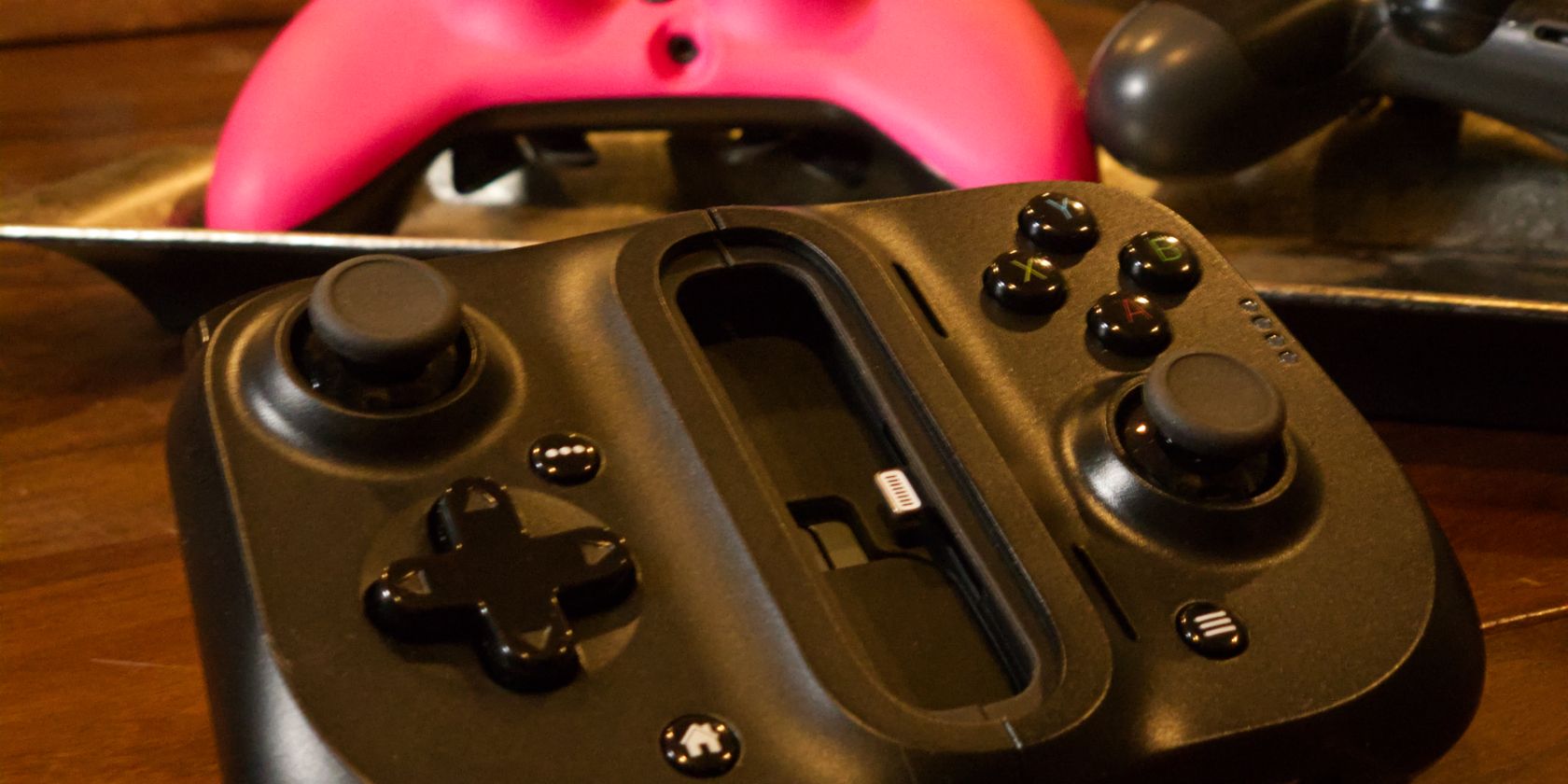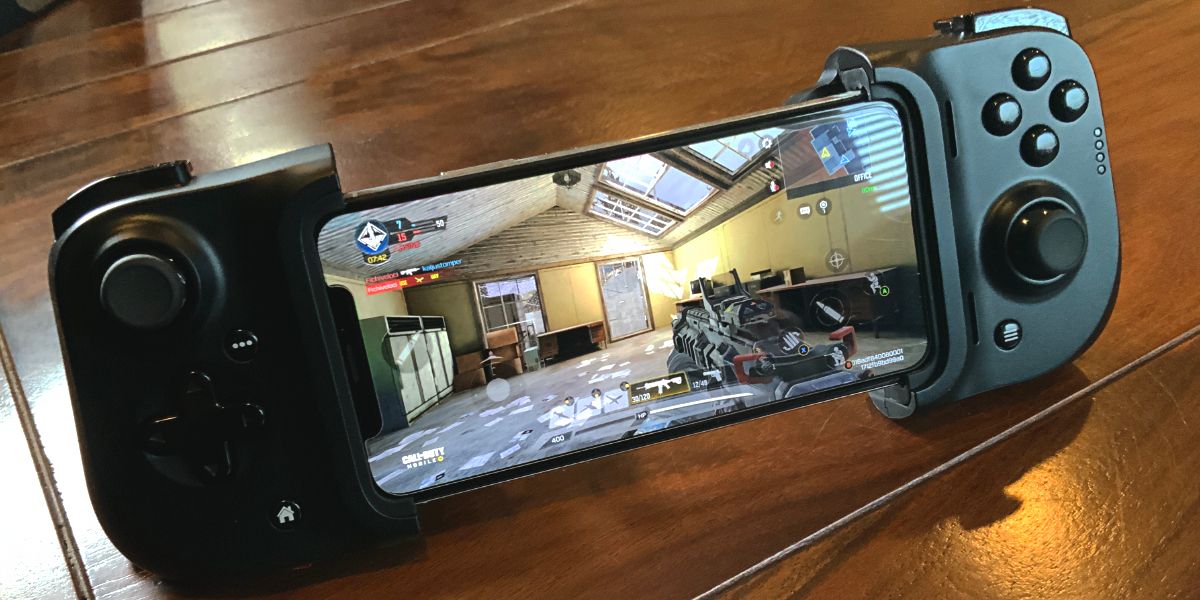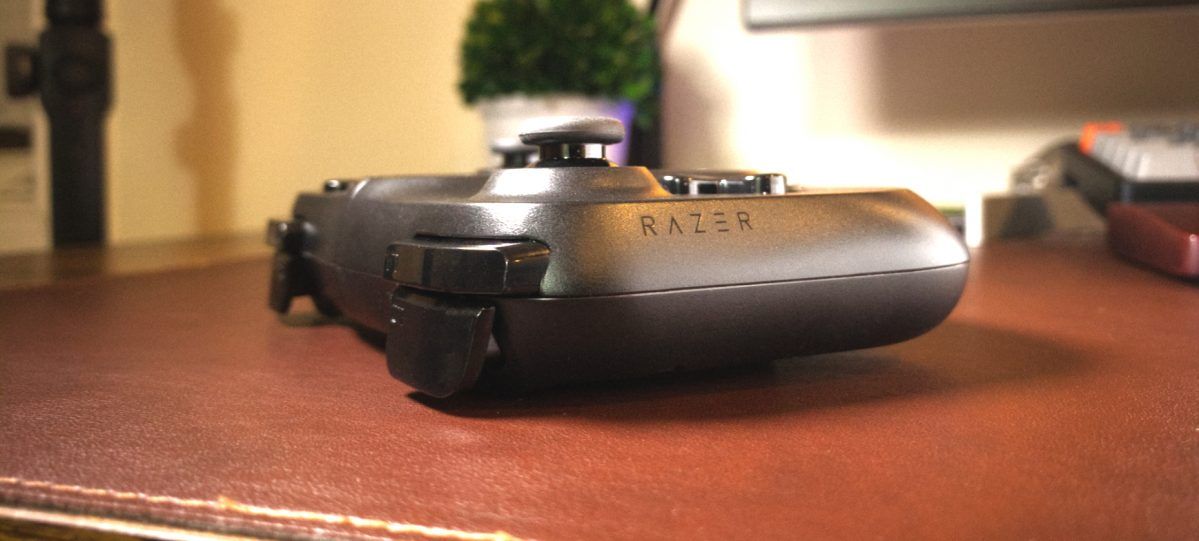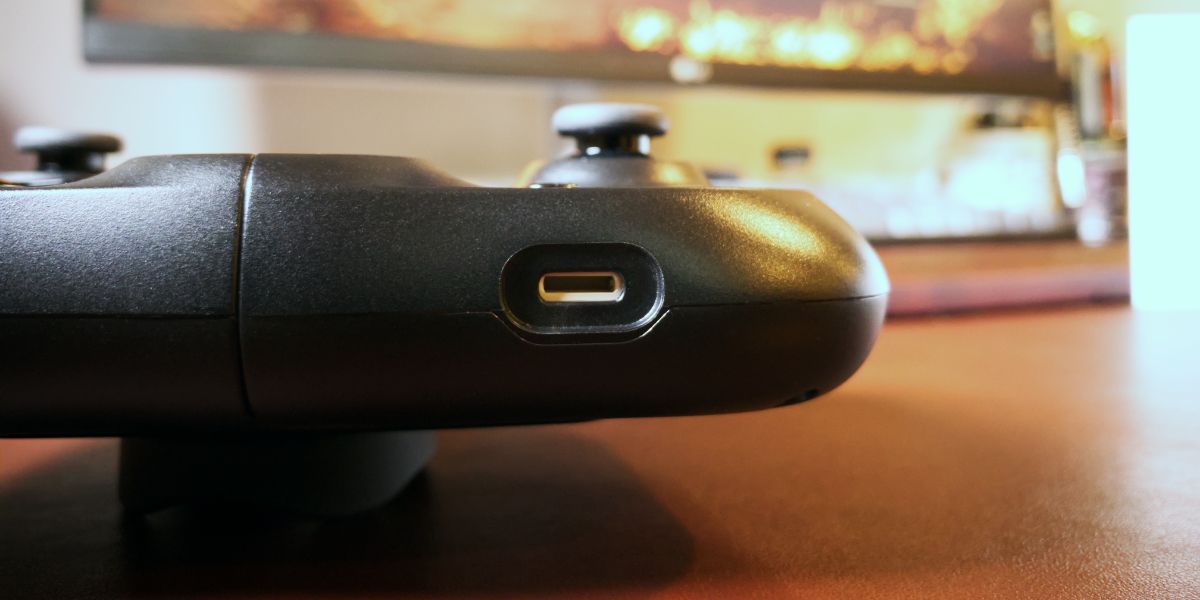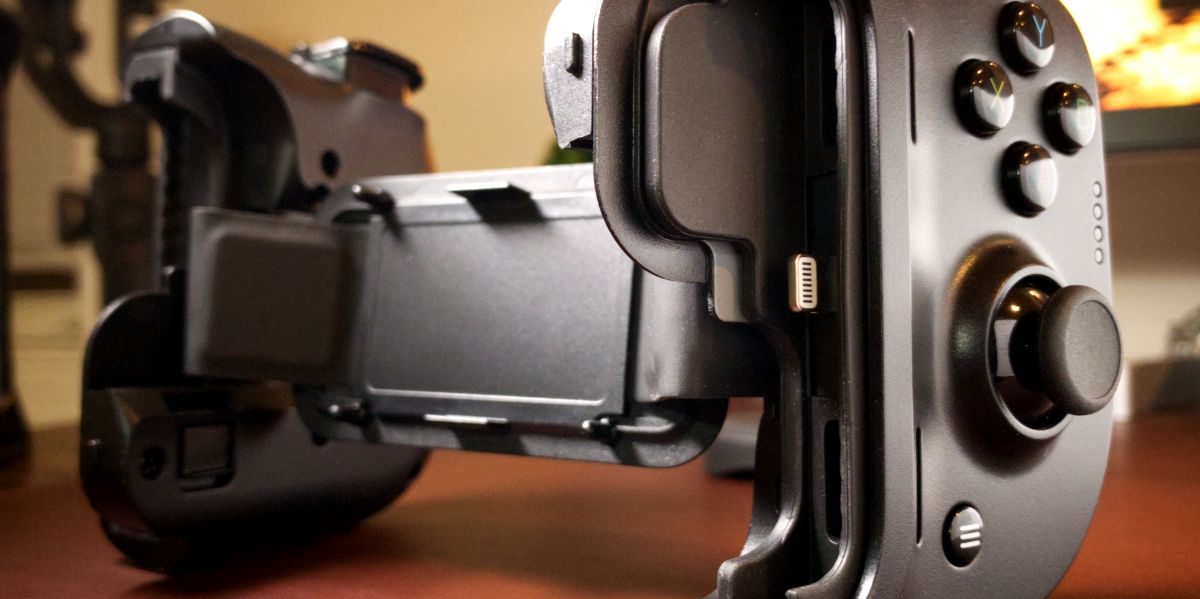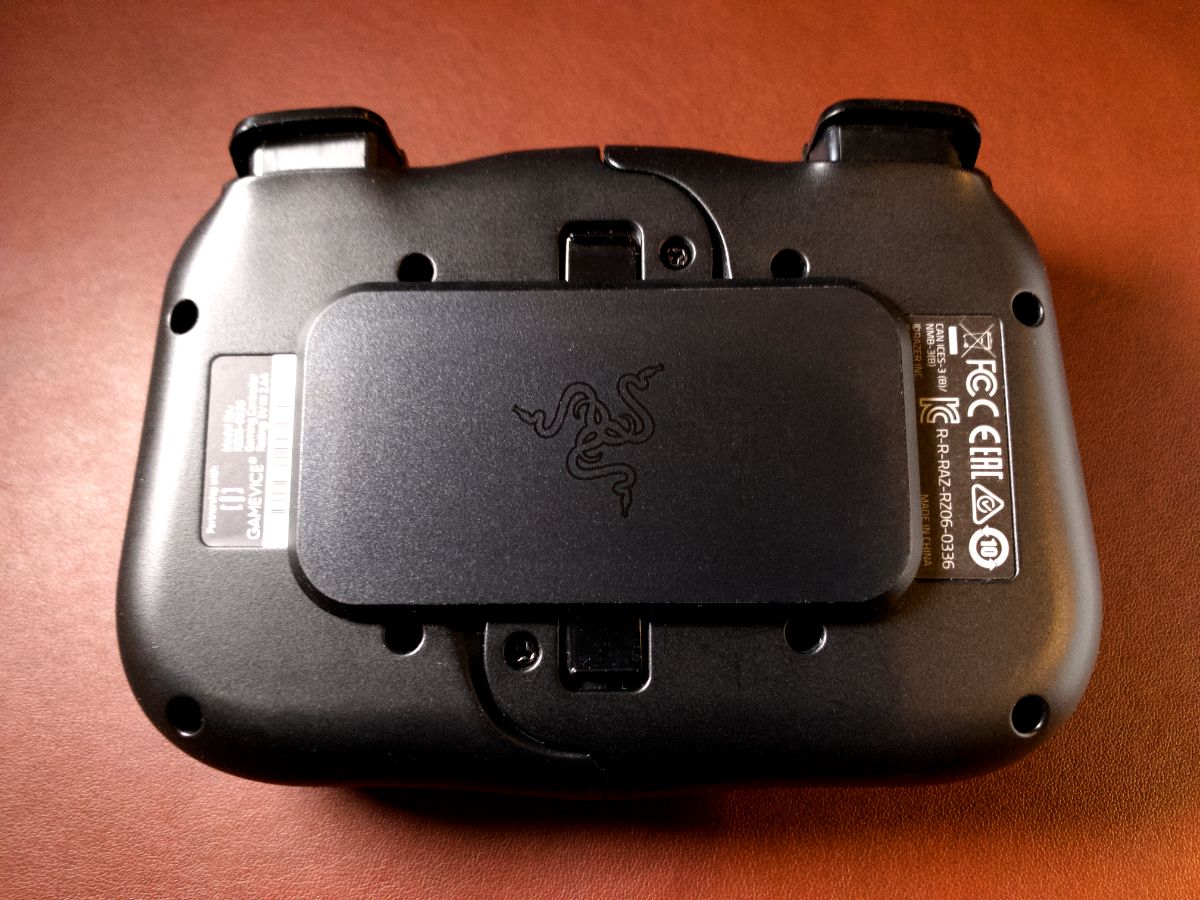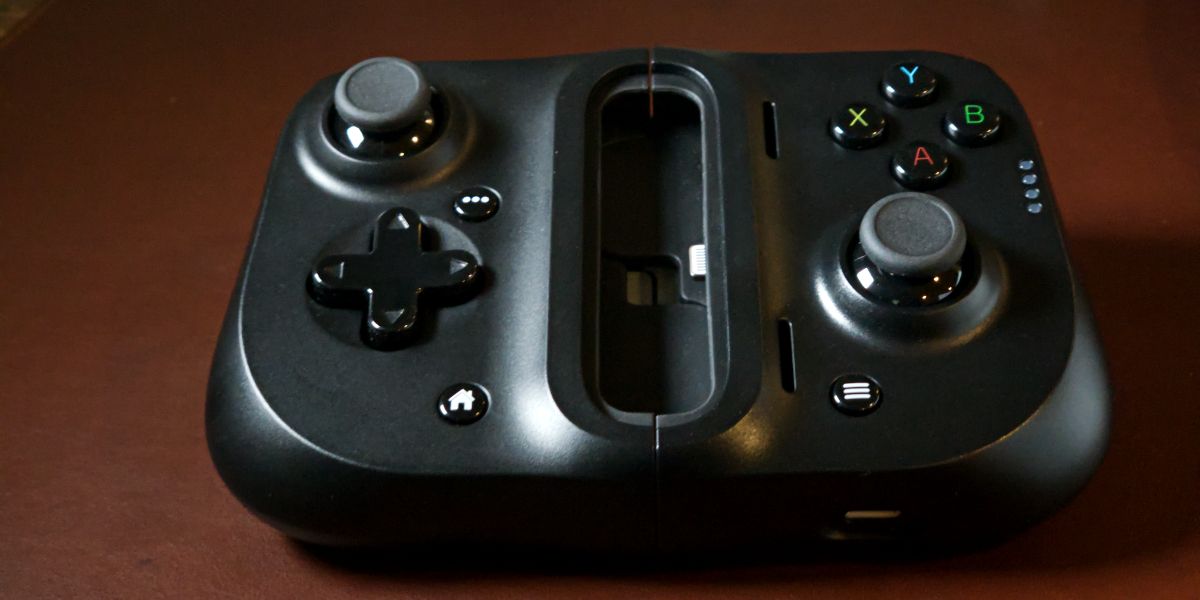The Razer Kishi promises an edge for mobile gamers, but can it keep its promise?
- Dual Thumbsticks
- Console Quality D-Pad
- Supported Razer Kishi App
- XYAB Button Configuration
- Additional Home, Option, and Menu Buttons
- Brand: Razer
- Platform: Android, iPhone
- Battery: None
- Connectivity: USB-C (Android), Lightning (iOS)
- Headset Support: No
- Programmable: No
- Extra Buttons: Yes
- Lightweight
- No Batteries
- Pass-thru Charging
- Compact
- High Cost
- Fiddly Construction
- Mushy Triggers
- Wobbly Grip
- No Hardware Headphone Support
The Razer Kishi is a mobile gaming controller for iOS and Android. The Kishi combines console-like controls with the portability of a mobile gaming setup. But is it right for you? Today, we’re seeing if Razer’s newest mobile controller offers a significant edge over the competition, or if its performance is downright dull.
Meet the Razer Kishi
For lovers of mobile gaming, there is one thing that can quickly set you apart from the competition. A controller.
Let’s face it, gaming on a mobile screen is almost always awful. The thumbprints, the ergonomics, and the lack of triggers all add up to a miserable experience.
To dominate in modern mobile games like Call of Duty: Mobile or NBA2K, you need something more precise than on-screen controls that block your view of the action. You need a controller.
Enter the Razer Kishi. Kishi blends the familiar feel of your favorite console controller with the portability of a smartphone.
The Key Features of the Kishi
- XYAB main button configuration
- Home, Option, and Menu buttons
- Dual thumbsticks for precise control
- Console quality D-pad
- Front-facing dual triggers
- Razer Kishi App
- Lockable backing plate for compact storage
- Lightning or USB-C connectivity (depending on model)
Apple and the Problem With Mobile Controllers
The iOS version of the Kishi is the unit we tested, and it is the most recent offering from Razer. But Apple and aftermarket controllers haven’t always gotten along.
Before iOS 13, mobile controllers were limited to mechanical rigs that mimicked touching the screen with the tip of a finger. Most were clunky and cheap-feeling. However, with iOS 13 came Bluetooth controller support. Now, in iOS 14, gamers can connect both Xbox and Playstation controllers to their iOS devices.
This means that a true console-like experience is available if you don’t mind the smaller screen. Since this introduction, the iPhone and iPad both make excellent mobile setups for hardcore gamers to get their fix. But batteries and Bluetooth present some unique challenges. Most controllers are useless unless they’re charged, and Bluetooth connectivity can introduce unwanted lag. Plus, many console controllers are heavy and bulky.
The Kishi aims to resolve these issues. It doesn’t need extra power and doesn’t use Bluetooth. Kishi’s direct connection is virtually lag-free. The unit is light, and the controller’s small footprint allows it to easily fit into a purse, bag, or backpack. Additionally, the iOS version of the controller is Apple MFi certified. This means it is designed to work with Apple’s more recent iPhone and iPad offerings.
Touring Kishi’s Configuration
On the face of the Kishi is the standard XYAB button configuration that you’ll recognize from Xbox/PlayStation. The Kishi also sports three extra function buttons.
These buttons are labeled in the official documentation as ‘Home,” “Options,” and “Menu.” Unfortunately, the home button and menu button didn’t respond to any presses in any of the games we tested.
On the right half of the controller are four LEDs. These LEDs are “status” LEDs, which track devices you’ve paired with your phone. If you have multiple controllers connected, Kishi will light up multiple LEDs.
After attaching the Kishi to a smartphone, the top LED illuminates red to show it has been connected. We only used one controller, so the other LEDs didn’t appear during testing.
Two sets of triggers provide a console-like feel for blasting opponents in games like PUBG mobile.
The Kishi also offers pass-thru charging which allows you to power up while you play. When you’re finished with your session, Kishi folds up into a sleek package roughly the size of your smartphone.
Ergonomics
Holding the Kishi is comfortable but awkward. The awkwardness is due to the length of the unit when it's in use. With our iPhone Xs installed, the entire package measured roughly 10” in length or 25.5 cm. This makes the Kishi feel a lot like the younger sibling of the Nintendo Switch. When connected, the Kishi and iPhone Xs had a significant heft of 12.4 ounces or just shy of 350 grams.
It’s enough weight to feel sturdy, but not so much that your arms get tired. On the back of the Kishi, are two indentations that allow the user a sturdy grip on the controller. This makes for a secure feel in the hands.
The Razer Kishi uses interchangeable rubber bumpers to accommodate different-sized smartphones. These bumpers fill the space where the Kishi connects. To support these different-sized phones the controller comes with a set of both large and small bumpers.
We had to switch out the bumpers that came with the Kishi from the factory before installing our iPhone Xs. This was an easy process and with a little tugging and pushing, the new rubber inserts popped right in.
Despite these extra measures to make the Kishi feel secure, moving your hands off of one side of the controls causes the controller to become significantly unbalanced. If you’re not ready for the difference in weight, it is possible to fumble the whole works.
This situation is more dangerous if you’re right-handed. This is due to how the Kishi attaches to your phone. The connection port for the Kishi is on the right side of the unit, but the left part of the controller “folds” over the top of your phone. Removing your hand from the right side of the unit can dislodge your smartphone, and send it crashing to the floor.
This is important because the design of the Kishi doesn’t allow room for a protective case to be used while playing. If the idea of your naked phone taking an expensive tumble terrifies you, then you’re not alone.
It’s tempting to try and squeeze a thin case into the Kishi by removing the rubber inserts, but this didn’t work for us. The cased phone fit, but there wasn’t enough space for the Lightning connector to attach properly. For avid risk-takers, this may not be a problem.
One of the best parts of the Kishi is its lack of internal batteries. Instead of having to charge the unit, it’s powered via a hardware connector that shares power with the phone’s internal battery. On the iPhone model, this connection was via a Lightning connector. The Android version uses USB-C. This hardware connection allows for nearly lag-free downing of enemies in Call of Duty: Mobile.
Can You Use Razer Kishi With Streaming Services?
Absolutely. In fact, one of Kishi’s main draws is for use with streaming services like Google Stadia and GE Force Now. Cloud-based services like these are perfect for mobile gaming without the limitations of phone-side hardware. That’s why the Kishi has become a popular controller for these services since its release.
We wanted to test these services with the Razer Kishi to see if the hype was true. Unfortunately, with Stadia, we couldn’t load any games despite an active subscription.
Razer also claims Steam support via the Steam Link app. Unfortunately, our Mac M1 did not allow the installation of the Kishi software supported by Steam Link. Even with repeated tries.
In the end, we weren’t able to get the popular gaming service working. This failure is disappointing. As a streaming unit for these services, the Kishi seems perfect. Though, to be fair, this limitation was more related to the M1 Mac used for testing than to the Kishi.
It should be noted that most Windows gamers have had no problem connecting to these online platforms.
This means that if you’ve got a Windows machine as your main gaming rig, Kishi can help you untether. Just attach your phone to the controller, fire up a streaming service app, and play.
Download: Steam Link (Free) iOS | Android
Download: Google Stadia (Free) iOS | Android
What’s Not to Love About the Razer Kishi?
Unfortunately, the Kishi has several flaws that make choking down its $99 price tag ($79 for the Android version) difficult.
For starters, the triggers on the unit felt—for lack of a better term—mushy. While this issue may only affect this specific unit, it is something that took some getting used to. Especially coming from something like a PS4 controller or a Scuf.
The dual thumbsticks felt tiny even in medium hands, and the sticks didn’t provide much in the way of grip. The Kishi’s concave sticks and rubberized coating didn’t seem to help much here.
On top of that, the left side of the controller had a distinct wobble. This wobble occurred when pulling the grip back toward the user. The Lightning port held the phone tight, but that wobble was enough to cause concern.
Collapsing the controller also revealed one of its pain points—durability. This is because folding the Kishi requires the alignment of two plastic “ears” inside the unit. These ears are at the center and are about 1/4” in width. Under these ears are two larger plastic ears that must slide below the opposite grip. This makes putting the Kishi together like making a sandwich by sliding the meat between slices of bread. It seems inefficient and unruly.
If these ears aren’t aligned, the Kishi will not snap together. This takes away some of Kishi’s appeal as a grab-and-go controller. It’s frustrating to have to stop and ensure your unit is not going to break when you have to stow it quickly. This construction makes the Kishi feel more delicate than a premium controller should feel.
Then there’s the pass-thru Lightning port. The Lightning port on the unit is a great idea for charging. But, this port doesn’t allow for other components. This means that you can’t plug in headphones or even a headphone adapter. This forces the user to either carry a set of Bluetooth headphones or just play with the sound limitations of their phone. Maybe this isn’t a problem for you, but it is an important consideration for some, especially for gaming.
Besides these initial complaints, there is the question of quality control. Once during testing, our unit stopped functioning. No lights or sounds. Just dead. It took repeated attempts of plugging, unplugging, and resetting the phone before the unit finally reanimated. In a brand-new unit, this glitch is concerning.
The Biggest Problem With the Razer Kishi
Our biggest gripe with the Kishi though is just how average it seems for a premium controller. It doesn’t stand out among the competition in the way a top-of-the-line product should. It’s expensive but offers similar functionality to last-gen console Bluetooth controllers.
In the gaming industry, being average is never a good thing. Average isn’t exciting, and the Razer Kishi is remarkably average. Besides a super-lightweight setup and no batteries, it was hard to find a reason why someone would pick the Kishi over a regular controller.
Though the Kishi may offer some advancements, they don’t seem spectacular. For amateur mobile gamers, lag usually isn’t an issue. Plus, cell phones must be charged, so charging a controller isn’t a huge hassle.
While a compact form factor is nice, the Razer Kishi isn’t significantly smaller than a standard controller. And, the Kishi is roughly $40 more expensive than a last-gen Playstation or Xbox equivalent.
“Because it looks cool,” is a tough sell when it’s $40 more than a DualShock and doesn’t offer $40 worth of additional features.
Lastly, the Kishi isn’t as robust as a standalone controller. Its lack of heft makes it feel like a toy when compared to Playstation, Xbox, or Steelseries’ Nimbus controller models.
Should You Buy the Razer Kishi?
If you want to feel like you’re playing a budget Switch, then the Razer Kishi is a good option. If you want to access cloud-based services like Google Stadia or GeForce Now, then the Kishi will also work well. If you’re looking for a portable way to connect to Steam on your main gaming rig, then the Kishi would also suit you.
Additionally, if Bluetooth controller lag drives you insane, then buy the Kishi. For you, it will be worth the reduction in latency. If you pride yourself on a pair of small hands, then the Razer Kishi is also a great alternative to larger controllers. Finally, if you want a controller that is compact and doesn’t need charging, then the Kishi fits the bill.
But, if you prefer the feel of a more robust package, then you’ll want to avoid the Kishi. For those folks, we’d recommend something like the Steelseries Nimbus+. It’s less money and offers a similar feature set. Additionally, if swapping out your phone case is a hassle, then it may be best to pick an alternative to Kishi. And, if you don’t own a decent set of Bluetooth headphones then you’re going to be disappointed with this controller.
Finally, if you have hands large enough to palm a basketball, then the Kishi might not be a good fit. You’ll have to test out the ergonomics for yourself.
Kissing the Kishi Goodbye
The Razer Kishi is a decent controller with an okay set of standard features. Unfortunately, these features are lackluster and don’t set it apart from the competition. If you’re on the fence you might want to save some money by using a spare console controller.
The slight performance increase of a hardware connection doesn’t justify Kishi's high price, and the pillowy triggers and delicate construction are significant pain points. If you’re not bothered by those things, then feel free to give the Kishi a try. You might like it.
Overall, the Razer Kishi is fun to use, and it gives you an advantage in games like Call of Duty: Mobile or PUBG. But in the end, it’s hard to justify paying a premium price for a controller that is only slightly different than the ones you already own.

